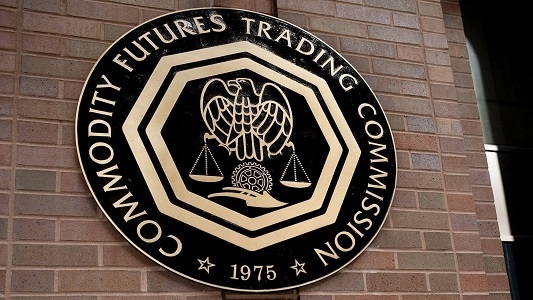Citi: Targeting transparency
“Some of the closures were a surprise, as the firms were well-respected competitors with strong capabilities, whereas others were somewhat expected as they were more marginal providers,” says Steve Dalzell, global head of transition management at Citigroup Global Markets.
“While we cannot say for certain whether the closures were a direct result of the industry review, it is quite possible that the additional scrutiny from the regulators threw light internally on the transition management (TM) function and this contributed to the decision to close the operations.”
Regulatory scrutiny
The regulatory focus has been good for clients, however, not only for the remaining transition managers who enjoyed a flurry of request-for-proposal activity.
“Probably the biggest improvement brought about by the regulator’s scrutiny is that the transition management service is now much more transparent from top to bottom,” adds Dalzell.
“The investigations into several providers threw up some serious issues, including undisclosed charges, weak controls and insufficient oversight. The result of these well documented issues is that clients now do far more intensive due diligence and demand far higher standards. This due diligence typically extends throughout the entire project and is not just focused on the execution phase.”
“We do not think it is a bad thing that a number of players have left the market, so long as the consolidation does not result in insufficient choice for clients,” says Max Lamb, investment consultant at Towers Watson.
“Reassuringly, a number of new players are emerging, many staffed largely by key personnel from operations that have left the market. Indeed some of the newer players have been putting significant investment into technology, staff and capacity – this should help to keep the market competitive.
"We are always encouraged to see firms investing in dedicated technology solutions, because this not only reduces the potential for errors, but allows a transition manager to focus on strategy and implementation, not reconciling asset lists and manipulating data. This leads to better outcomes for clients, as the best strategies and implementation will offer tangible opportunities to save costs and reduce risk.
"Also, when a big investment is made into technology, it gives you more faith that the organisation is committed to transition management. For a client, all of these features are good news, but it does make the job of researching and selecting the best transition manager all the more important.”
Changing demand
Demand for transitions this year has been growing, particularly at the small end.
“In addition to the big events, we are seeing a larger number of small events that are in the £50-£100m range, as pension fund clients increasingly achieve better diversification through numerous smaller pooled fund mandates,” says Lamb. “As a consequence transition managers are needing to be better versed in the intricacies of in specie investments, fund pricing and the tax consequences of change of beneficial ownership transfers.”
As trading becomes more sophisticated, great skill, professionalism and technology is required across the board.
“The potential pitfalls of trading in some markets have increased hugely in recent years with the growth of dark pools, smart order routing and algorithms, with the risk of being gamed becoming very real,” adds Lamb.
“To avoid adverse performance, there is a very real need to make sure that the transition manager you select is properly equipped and sophisticated enough in the markets you need to trade in. In this regard there are a few players with global scale, but also some regional or market experts.”
Many clients now use third-party firms such as Harbour Analytics, Inalytics and Nexus to provide independent quantitative post-trade analysis. Some TMs, such as Citi, provide all clients with a complete file of every single transaction in an event, which regularly includes in excess of 100,000 individual transactions.
Clients can either audit the transition by checking a sample of trades against a trade recapture system like Bloomberg to verify the exact time and price of a trade or they can use the services of a specialist third party.
Dalzell says Citi works closely with several of these specialist firms and will often absorb the costs of this service for the client.
Selective outsourcing
Universities Superannuation Scheme (USS) has undertaken several transitions, using a panel it put together three or four years ago.
Citi has managed transitions for the fund, most recently in December when it switched some of its internal holdings out of MSCI benchmarked regional funds into a new internally managed global fund focused on companies that will pay rising real dividends over time with lower capital volatility than the MSCI All Country World Index.
“As we have internal execution capabilities we will review whether some elements of a transition would be better handled internally – our aim is to secure the best outcome for our client the pension fund,” says Elisabeth Fernando, head of European equities at USS Investment Management, a wholly-owned subsidiary of USS.
Fernando says in the past “one area where we have been less pleased is in FX, and switching currency as part of a transition. As a result this is now done in-house by our internal team that deals in FX for the scheme on a daily basis. This way we gain better visibility on rates and best execution”.
She adds: “Certainly fixed interest and FX are the difficult areas to monitor. They rely on the counterparty book and their willingness to make you a price. The concept of the ‘current market price’ is very different to that which exists in equities markets.” One irritation for Fernando has concerned the legal documentation for another TM on its panel of transition managers. She is still struggling to win the level of protection that had been arranged in an earlier agreement in terms of the indemnity offered.
“We want to be able to select the TM for a transition purely on our perception of how well they would do that particular transition,” she says. Contracts are not consistent across the industry.
“We do not see any scope for having a one-size-fits all Transition Management Agreement (TMA), there are too many different business models, client types and cultures to accommodate,” says Lamb.
“At Towers Watson we have agreed, negotiated and reviewed TMAs with several providers on a pro-forma basis and clients are able to gain access to a TM using this route, with the reassurance that due diligence and legal review has already been conducted.
"We see the T Charter, particularly as it evolves, as another source of client assurance, but are concerned that the take-it-or-leave-it, one-size-fitsall approach is not always helpful. As well as pushing for the T Charter to include mandatory disclosure of more detailed post-trade data, we would like a move to allow transition managers to identify where they are largely in compliance with the charter, but have small differences in operating model. Aligned with proper advice this could lead to wider client choice.”
Strategic planning
Today, clients spend considerably more time strategically planning when a transition will take place than was the case several years ago. “This is a direct result of a substantial change in the level and characteristics of market liquidity,” adds Dalzell.
“Several years ago you could execute an average size transition on any given day and the market impact would have been minimal. In the equity market, liquidity is currently 35% below where it was in 2011, and the remaining liquidity is concentrated around events such as index rebalances, futures and options expiries and month-end passive fund flow. This is a function of the growth in ETFs and passive investment strategies and results in much thinner markets during the rest of the month.”
The potential for conflicts of interest is always an important consideration. Lamb believes the agency model is the least conflicted and more likely to be in the client’s best interests. “That is not to say that transition managers with the capability to deal on a principal basis are the wrong choice,” he adds.
If the transition is of considerable scale, it may be worth the loss of clarity on costs to achieve a degree of speed and certainty.
Dalzell advises clients to visit the TM in their office to see where the team sits and how the information is managed, ensure there is physical segregation from trading or fund management functions, speak to compliance and legal representatives and see full systems demonstrations.
His team is located on the private side of Citi to address the conflicts that exist within a broker-dealer. “For asset managers, the conflicts are different,” Dalzell says.
“They are probably managing active portfolios themselves and segregation should exist to prevent in-house fund managers from seeing transition management trading information. Clients should also understand how trading orders are prioritised when dealers receive two orders in the same security, one from the TM team and the other from a fund management team.”
Implementation shortfall is the accepted measure of a transition’s success and is fully inclusive of implicit and unrealised costs and offers complete transparency and attribution of every basis point of the cost of implementing a transaction.
“However sometimes it is ironic that a client may make an important investment decision, take two to three months to prepare the changes to their portfolios yet only focus on the costs of implementing that decision on the day of execution,” Dalzell says.
“This short-term focus can often lead clients to make uneconomic decisions by incurring hedging costs which are only in place for a single day, when there may be arguments to hedge from the time the investment decision is made or alternatively not to hedge at all.
"The singular focus on the one-day trade costs can also result in clients overlooking the three to four weeks of project work and resource provided by the transition manager.”
By making it a target all of the time, the client’s interests are not always best served. “It is really important to consider client context and make sure that the transition manager you hire understands it as well, which may mean forgoing target fixation on costs versus T-1 close,” Lamb says.
Found this useful?
Take a complimentary trial of the FOW Marketing Intelligence Platform – the comprehensive source of news and analysis across the buy- and sell- side.
Gain access to:
- A single source of in-depth news, insight and analysis across Asset Management, Securities Finance, Custody, Fund Services and Derivatives
- Our interactive database, optimized to enable you to summarise data and build graphs outlining market activity
- Exclusive whitepapers, supplements and industry analysis curated and published by Futures & Options World
- Breaking news, daily and weekly alerts on the markets most relevant to you



